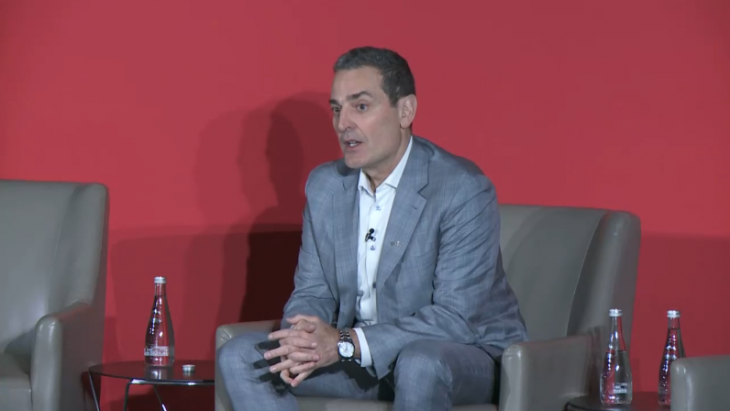
By Ahmad Hathout
OTTAWA – The spate of acquisitions by incumbents of wholesale internet service providers in recent months is not because of a difficult market or bad wholesale access rates, Bell argued in its most recent submission to the CRTC’s wholesale internet framework proceeding, which is messaging that runs counter to what competitors have been saying.
“These acquisitions were completed for a variety of reasons, including succession planning, and the sales were made at strong valuations, not because the Resellers went bankrupt, were driven out of the market or…because of ‘the broken wholesale access model,’” Bell said, in reference to a quote from independent ISP association the Competitive Network Operators of Canada (CNOC).
“These acquisitions may, at least in part, also serve to accelerate the expansion of providers beyond their traditional facilities-based territory,” Bell added. “Consumers stand to further benefit when a provider, well established in other parts of the country, expands into new areas.”
Bell, which last year purchased Quebec-based EBOX, closed its acquisition of large Ottawa-based independent ISP Distributel earlier this year. Videotron purchased VMedia, Start and Altima went to Telus, and Oxio’s internet business to Cogeco.
And now the Globe and Mail is reporting, citing sources, that the largest independent ISP TekSavvy is currently looking for its own suitors.
The independent service providers, regional players like Quebecor and public interest groups have argued that the high merger and acquisition activity in the industry is, in part, the result of smaller players being unable to compete because they are being squeezed out by network access rates.
CNOC said in its most recent submission to the commission that the acquisitions were created out of “unjust and unreasonable” wholesale access rates, the inability of competitors to access the last mile fibre of the incumbents to diversify their retail offers, and regulatory delay, among other things.
The CRTC once upon a time proposed lower wholesale rates in 2019, but reversed course because of methodological errors and made final higher interim rates from 2016.
Bell’s submission is part of its appeal to the CRTC to think carefully about what it will do about the next wholesale internet framework, on which the commission is expected to hold a hearing next year. The regulator has said the market has not been sufficiently competitive enough to drive down wireline internet prices.
“The Commission’s approach to this proceeding raises the concern that it is mistakenly focused on improving the business case of Resellers or responding to popular misconceptions about retail Internet,” Bell’s submissions said. “Yet the state of wholesale-based competition can only be a public policy concern if competition from Resellers is a) necessary for vigorous and dynamic competition to exist at retail and b) the existing wholesale regulatory regime is malfunctioning. Neither of these conditions are fulfilled.
“As such, the Commission’s mistaken focus on improving the business case of Resellers is a public policy pursuit that will come at the cost of much more important Government and Commission priorities – the buildout of the [universal service objective] to the entire country. It will also materially reduce private sector investment in critical network infrastructure and inevitably lead to further job losses in the telecom sector.”
Bell added that it is disappointed that the CRTC didn’t inquire about the alleged harm to investment from regulation as part of its line of questions, despite investment being part of the 2023 policy direction from Cabinet. Regional player Eastlink agreed.
Bell is recommending the CRTC maintain the current wholesale regime and to refrain from mandating access to the last mile fibre of the incumbents on the current aggregated regime.
Disaggregated regime
The commission has already determined that the disaggregated regime – wherein third parties must invest in their own middle mile facilities in exchange for access to that last mile fibre – has not been working, despite it being available in select areas in Ontario and Quebec. That regime was supposed to be the future of the wholesale internet framework.
Rogers said in its most recent submission that the commission cannot close the door on that newer framework.
Should mandated access to incumbent wireline facilities continue, Rogers said the CRTC must reduce the level of aggregation of those services, review the regime after three years to consider increasing disaggregation, and to ensure that an investment rationale is built into any adjusted wholesale rate to continue to incentivize the building of networks.
Quebecor is asking the CRTC to get rid of the disaggregated regime and impose a limit of one interconnection point per province to access all the subscribers of the incumbents.
“ISPs simply cannot achieve profitability with a business plan based on the disaggregated model, which is exacerbated by the clear undue preference that Bell has conferred upon itself in areas where it has near-monopoly control in the provision of transport services,” Quebecor said in its submission.
But Rogers said this would create problems. “The greater the level of aggregation, the lower the investment requirement for wholesale-based competitors,” Rogers said. “This lower entry barrier comes at a cost. A single point of interconnection to serve an entire Province (or more) limits the scope for and impact of wholesale-based competition, can only be sustained by ongoing regulatory assistance, and is not required for viable wholesale-based competition.”
Rogers said the CRTC should actually increase the number of points of interconnection to 10 to 12 in each of Ontario and Quebec, four and five in each of British Columbia and Alberta, and one and two in each of the remaining provinces.
“Absent this, there is no roadmap in Canada to sustainable, unmanaged competition,” Rogers added.
Telus agreed that mandated access to facilities should be on the disaggregated model.
Broadly speaking, the Vancouver-based company is pitching something closer to the status quo, suggesting the commission should disregard “populist talking points” and “low quality information” about the state of the industry.
“The Commission must resist the temptation to snatch defeat from the jaws of victory,” Telus said in its submission. “The broadband market is already competitive. Canadians benefit from competitive pricing and from very high levels of investment in next-generation networks. Indeed, competition is only getting stronger, as carriers like TELUS expand into their non-traditional geographies, replacing smaller independent Internet service providers (“ISPs”), and consumers benefit from the significant incentives offered to win their business.”
Cogeco, Eastlink concerned about incumbent access to regime
Cogeco appeared more concerned about who should have access to the wholesale mandate. CEO Philippe Jette warned at a TD Securities conference earlier this year that his company is concerned about incumbents being able to ride on the networks of the smaller players under the current regime.
The Montreal-based company, in arguing for the regime to be used only for smaller or regional providers, said in its most recent submission that this is a “new risk that has emerged in the wholesale space.”
The risk is the big three “using the wholesale HSA regime as a vehicle to maintain and further entrench their joint dominance in the provision of wireline and wireless services, to the detriment of regional facilities-based competitors,” Cogeco said in its submission.
“We refer specifically to the ability of the three dominant carriers to take advantage of their market power, combined with access to artificially low wholesale tariffs, to undermine regional facilities-based competitors outside of their operating footprint and become dominant retail service providers on regional competitors’ networks,” driving competitors out of their markets, it added.
Cogeco’s other major recommendation is that the regulator shield new last mile fibre deployments from the mandated access regime, which is a position supported by Bell and Telus.
“This approach would, among other things, recognize the inability of nascent [fibre-to-the-premises] providers to distribute their implementation costs over a meaningful customer base,” Cogeco argued. “In our view, it would be reasonable to establish this exemption threshold at 350,000 FTTP homes passed.”
Cogeco also recommended that an aggregated and disaggregated regime should not be mandated simultaneously for access to the same technology. It also recommended that the CRTC not get involved in setting rates for download speeds above 50 Mbps – which is the federal objective – and allow the companies to negotiate. The latter measure would allow for continued investment in networks and the flexibility to determine costs based on growth in broadband consumption.
Eastlink backed Cogeco on the access point.
“With the recent acquisitions by incumbent carriers of resellers, we are starting to receive requests from these incumbent-owned resellers for access to our wholesale HSA service in areas where the incumbent has their own network,” the Halifax-based company said. “The wholesale HSA service was never intended to be used by the largest telecommunications companies in the country to access other facilities-based providers’ networks.”
“Allowing incumbent providers to use each other’s network in areas where they have their own facilities will lead to a significant slowdown in innovation and investment, as incumbent providers may delay or cancel planned upgrades to their own facilities, and will instead rely on another provider’s network, eventually decreasing the number of facilities-based providers in many serving areas,” Eastlink added.
Xplore added that a further narrowing of the wholesale access regime should be made to ensure that it doesn’t apply to rural networks, which is a preliminary position of the regulator. The reasoning is simply that it costs more to invest in rural networks because of sparse populations, and having competitors ride on the network would reduce the rationale for an already tough investment.
‘Disinvestment threat is a tired canard’
CNOC argued that access to incumbent facilities, including their last mile fibre, would not hurt their investments because the wholesale rates will be set with a costing methodology that will allow them to get a sufficient return on investment.
“The disinvestment threat is a tired canard of Canadian telecom regulation, and it is time that the canard retires,” CNOC added.
TekSavvy argued for access to all incumbent facilities, make immediate reductions in the current interim wholesale access rates, and reduce the final disaggregated rates.
The Public Interest Advocacy Centre argued in its most recent submission that the CRTC should not rely on the facilities-based competition approach for internet competition in part because it’s “not economically feasible or efficient” for competitors to overbuild fibre infrastructure in incumbent territory.
The public interest group also argued for the continued existence of both the aggregated and disaggregated access regimes “until the Commission determines that phase-out would not unduly harm any providers.” But it also said the incumbent’s proposed disaggregated rates are “plainly unreasonable.”
It is recommending that the regulator cap the speeds at which competitors can provide service on last mile fibre at 1.5 Gbps on the interim regime and then gradually increase the cap to the incumbents’ maximum available speeds. Or it could provide the maximum current fibre-to-the-node rates minus 25 per cent for those last mile fibre rates.




